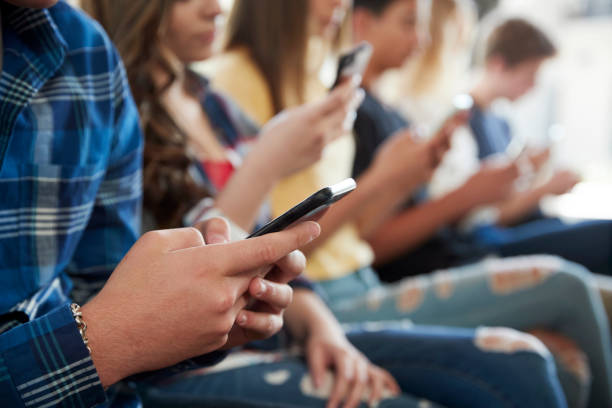Alabama House Approves School Cell Phone Ban, Prompting Debate Over Safety and Student Well-Being
By Savannah Logan
The Alabama House of Representatives has passed a bill that would require all public schools to implement a “bell-to-bell” cell phone ban for students during class hours. House Bill 166, sponsored by Rep. Leigh Hulsey (R-Helena), passed with a 79-15 vote and now heads to the Senate for consideration.
The bill mandates that local school boards develop policies to ensure students store their phones during instructional time. Options for storage include locking pouches like Yondr or more affordable alternatives, such as over-the-door shoe organizers. While some schools have already adopted similar practices, the bill seeks to create consistency across the state.
Rep. Hulsey argued that limiting access to cell phones during class can help improve focus, academic performance, and even mental health. She cited research indicating that cell phone bans have led to better test scores and information retention, though some Democratic lawmakers, including Rep. Mary Moore (D-Birmingham), questioned the availability of this data.
According to the Pew Research Center, 72% of U.S. high school teachers identify cell phone distraction as a major classroom issue. Supporters of the bill say that limiting screen time could help students re-engage with learning and reduce social media-related anxiety.
However, not all lawmakers are on board. Concerns over student safety in emergency situations — especially school shootings — sparked debate on the House floor. Rep. Barbara Drummond (D-Mobile) voiced strong opposition, pointing to the ongoing threat of gun violence in schools. She highlighted the importance of students being able to quickly contact their parents in moments of crisis, referencing the 332 school shootings reported in 2024 and 52 more already recorded in 2025.
“We as a body need to protect our kids since we will not pass a bill to keep guns away from our school children,” Drummond said, referencing the failure of multiple firearm safety bills she has introduced in recent years.
Others, like Rep. Napoleon Bracy (D-Prichard), pointed out more routine scenarios where access to a phone might be necessary — for instance, a student needing a change of clothes or coordinating transportation.
Under the current version of the bill, students may only access their phones in three cases: if outlined in an Individualized Education Plan (IEP), for medical purposes, or during teacher-approved instruction.
The House did approve an amendment that removes penalties for non-compliant schools, prompting mixed reactions. Rep. Pebblin Warren (D-Tuskegee) criticized the change, saying, “We need to put some teeth into this bill. If we don’t, we’re going to be in the same position next year as we are this year.”
Bibb County Superintendent Kevin Cotner weighed in on the legislation, saying:
“Cell phones have been an increasing issue within our schools. While the new law will limit cell phone use within our schools, I believe education on responsible cell phone use is the greater need. Too many of our students are given cell phones for the sake of safety with no restrictions, and it opens them up to a whole new world they are not ready for when it comes to social media apps.”
The conversation around this legislation reflects a broader national debate about how best to balance student safety, mental health, and personal responsibility. While the intent behind limiting distractions in the classroom is widely supported, the reality of ongoing school violence casts a long shadow over the idea of limiting communication access during the school day.
As the bill advances to the Senate, parents, educators, and lawmakers will continue to grapple with the complex intersection of technology, education, and safety. What remains clear is that any solution must address not just discipline and distraction, but also the urgent and persistent need to protect students from the growing threat of school-based violence.

















